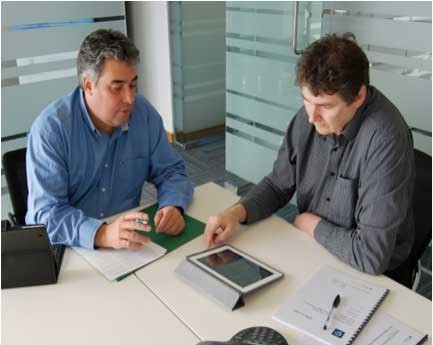How adopting and leveraging new technologies like Building Information Modelling, has helped a small enterprise in construction, to develop and grow, in one of the industries most challenging times.
This is not a story to simply highlight a particular company, but a story to encourage other SME’s (small medium enterprises) in the construction industry, to show how adopting new processes and digital technologies like BIM (Building Information Modelling), can help companies be more efficient, more productive, more innovative, to deliver better products and services into a global market – a market that is crying out for change and improvement.
Over 90% of companies involved in construction in Ireland are less than 20 people (SME’s). The challenge created by this level of fragmentation, is in “information flow and control” for business transactions, profoundly affecting efficiency, productivity, and outcomes. But digital technologies and processes, like BIM, are addressing that challenge, allowing SME’s to collaborate in a much better way, to compete with bigger players. The competitive advantage of SME’s, is that they generally have a lower cost-base, and are agile enough to adapt to change very quickly, setting up quick collaborative efforts to get big tasks completed. And change is happening, at an ever increasing pace. The construction industry worldwide is moving from an outdated paper-based systems, to digital data systems. SME’s have a unique opportunity, to leverage this change. As Darwin said, “…it is not the strongest (biggest) or the most intelligent of the species that survives, but the one most responsive to change”.
We all know the last 5 years have been some of the most difficult for anyone in the construction industry, but this example, illustrates how one SME in the construction sector, leveraged this emerging change in practice in construction, develop a thriving business in this difficult time.

“We firmly believe that our industry in Ireland should strive to be world-class in implementing better ways of designing and constructing buildings through BIM and related technologies” says managing partner Ralph Montague. “As an industry, we are behind other markets at the moment, but we are small and agile enough to adopt and adapt lessons learned from others very quickly, and with some joined-up thinking and effort, we can attract international business and boost economic activity in the sector – something we all desperately want. ArcDox was established to help people and companies, to implement a more effective way of working, by bringing our experience in this area to bear on business and projects”.
With financial support from Dun Laoghaire Rathdown County Enterprise Board and Bank of Ireland, and the enthusiastic commitment from staff, ArcDox set up their business in Sandyford, Dublin and have worked on over 50 projects over this period, that have incorporated BIM, and have trained over 500 people in the use of some of the BIM software tools available. “Having the skill and capability in this area has allowed a small company like ours to be involved with some of the biggest companies and most prestigious projects in Ireland, punching above our weight in this competitive market”, says partner Pat Slattery.
Ralph Montague is the chair of the RIAI (Royal Institute of Architects of Ireland) practice committee for BIM, and coordinator of a broader industry representative group, established under the Construction IT Alliance (CITA), who are in turn supported by Enterprise Ireland and Skillnet, set as a “neutral meeting place” to investigate and promote the adoption of BIM in a consistent way. The CITA BIM Group now has over 20 key stakeholder organisations officially represented, and over 4000 construction professionals on their LinkedIn group. Driven by a conviction that BIM, as a process, is all about improving collaboration and interaction with all stakeholders on projects, this group has hosted monthly breakfast workshops, annual conferences, and training events, with inputs from highly respected international speakers, over the last 3 years, to bring the construction industry the information and advice they need, to understand and adopt BIM. This has developed into an invaluable resource of information, available to individuals and companies who are members of CITA. It is the groups belief, that those who have the skill, knowledge and capability, to deliver and manage projects, in a far better, and far more sophisticated way, using BIM and related digital technologies, will be more competitive, more innovative, and able to leverage off-site, lean and green construction, to improve cost, value and carbon performance on local projects, and also attract business from clients on international projects. “The threat to our industry, if we don’t change”, says Ralph Montague, “is that we will not only become outdated and irrelevant to international competitors, but that our industry will begin to lose local projects to outside firms, who have become more efficient and competitive through BIM, From an SME’s point of view, the ability to quickly and easily connect information flows and controls, to collaborate with others and form temporary teams that have the capacity to deliver large items of work, will provide the advantage required to compete in this market”.
The growing success of a company like ArcDox, is a great example of how the adoption of leading edge technologies and processes can help small and medium enterprises to collaborate in a far better way and develop innovative business opportunities. An example of how close collaboration with the industry institutes and organisations, and using available support mechanisms from government, has not only helped a new business to grow, in difficult times, but has in turn provided expert advice and support back to our industry and professions. Anyone who is adopting BIM in Ireland is certainly aware of the contribution and impact that ArcDox has made, to help inform and transform the industry, and Irish Building congratulates ArcDox for reaching this 5 year milestone, particularly through these past difficult years. We wish them all the best for the future.
This article first appeared in Irish Building Magazine and can be viewed with this link.






